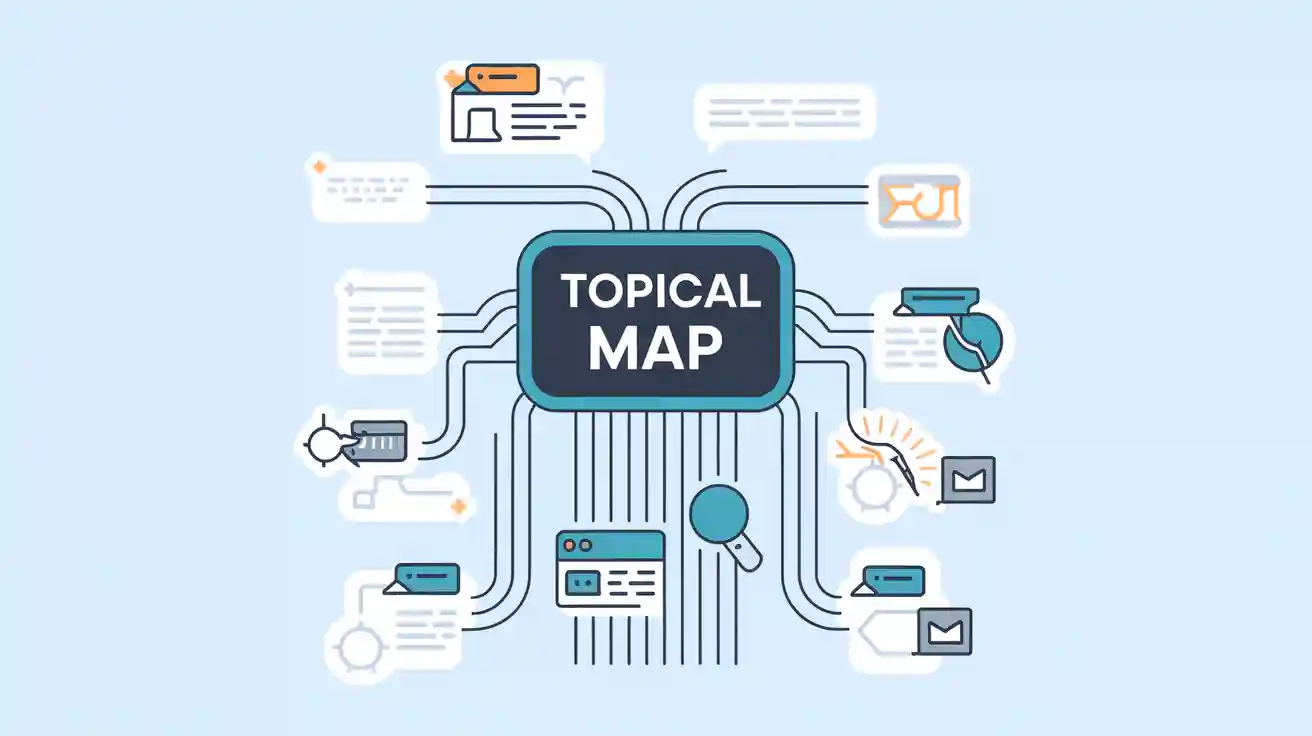What is a Topical Map? Topical Map Definition, Structure & SEO Applications
Discover what a Topical Map is, its definition, structure, and why it’s essential for SEO and AI search optimization. Learn how Topical Maps boost content authority, improve brand visibility, and drive results in both traditional and AI-powered search engines. Includes real-world applications and best practices.


One-Sentence Definition
A Topical Map is a structured blueprint that organizes website content into a clear hierarchy of topics, subtopics, and content clusters, helping both users and search engines understand the depth and breadth of your expertise.
Detailed Explanation
A Topical Map goes beyond traditional keyword lists by visually and strategically mapping out all the relevant topics and subtopics within a website’s domain. Instead of focusing on isolated keywords, a Topical Map emphasizes comprehensive coverage of a subject, ensuring that every aspect of a core topic is addressed. This approach not only improves user navigation but also signals to search engines—like Google and AI-driven platforms such as ChatGPT or Google AI Overview—that your site is an authoritative resource on the subject. As search algorithms increasingly rely on semantic understanding and E-E-A-T (Experience, Expertise, Authoritativeness, Trustworthiness) signals, Topical Maps have become essential for modern SEO and Generative Engine Optimization (GEO).
Key Components of a Topical Map
Core Topic: The main subject or theme your website aims to cover in depth.
Main Topics: Broad categories branching from the core topic, often aligning with primary site navigation.
Subtopics: More specific areas under each main topic, providing depth and granularity.
Content Clusters: Groups of related articles or pages targeting specific user intents, often identified through SERP and keyword analysis.
Internal Linking Structure: Strategic links connecting related content, reinforcing topical relationships and improving crawlability.
Visual Hierarchy: Mind maps or flowcharts that make the structure clear for both teams and search engines (see example).
Real-World Applications
SEO Content Planning: Topical Maps guide the creation of comprehensive content strategies, ensuring no important subtopic is missed (Ahrefs guide).
AI Search Optimization (GEO/AEO): With the rise of AI-powered search (e.g., ChatGPT, Google AI Overview), Topical Maps help brands structure their content to maximize visibility in answer engines and generative search results.
Brand Visibility Analysis: Platforms like Geneo leverage Topical Maps to monitor and optimize a brand’s coverage across AI search platforms, identify content gaps, and provide actionable recommendations for improving topical authority and search presence.
Content Gap Identification: By mapping existing and missing topics, teams can prioritize new content that fills strategic gaps and strengthens site authority.
Example: A SaaS brand uses a Topical Map to audit its presence in Google AI Overview. The map reveals missing subtopics around “data privacy” and “integration best practices.” With this insight, the team creates targeted content, improving both user experience and AI search visibility. Geneo’s platform automates this process, tracking coverage and suggesting optimizations in real time.
Related Concepts
Topic Cluster: A group of interlinked pages focused on a single subtopic, supporting a pillar page. Topical Maps are broader, encompassing multiple clusters and the relationships between them.
Keyword Map: A plan that assigns keywords to specific pages; less holistic than a Topical Map, which focuses on semantic relationships and user intent.
Content Silo: A method of grouping related content, often used within a Topical Map’s structure.
Semantic SEO: The practice of optimizing content for meaning and context, not just keywords—Topical Maps are a core tool for semantic SEO.
Knowledge Graph: A database of entities and their relationships; Topical Maps help websites align their content with knowledge graph structures for better search understanding.
Visual Example
Source: TopicalMap.com
Why Topical Maps Matter in the Age of AI Search
As AI-driven search engines and answer platforms become the norm, having a well-structured Topical Map is critical for:
Achieving higher topical authority and trust signals
Ensuring comprehensive coverage for all relevant user intents
Improving brand visibility in both traditional and AI-powered search results
Streamlining content creation and optimization workflows
Ready to optimize your brand’s AI search visibility and content authority? Try Geneo for real-time AI search monitoring and actionable topical map insights.





